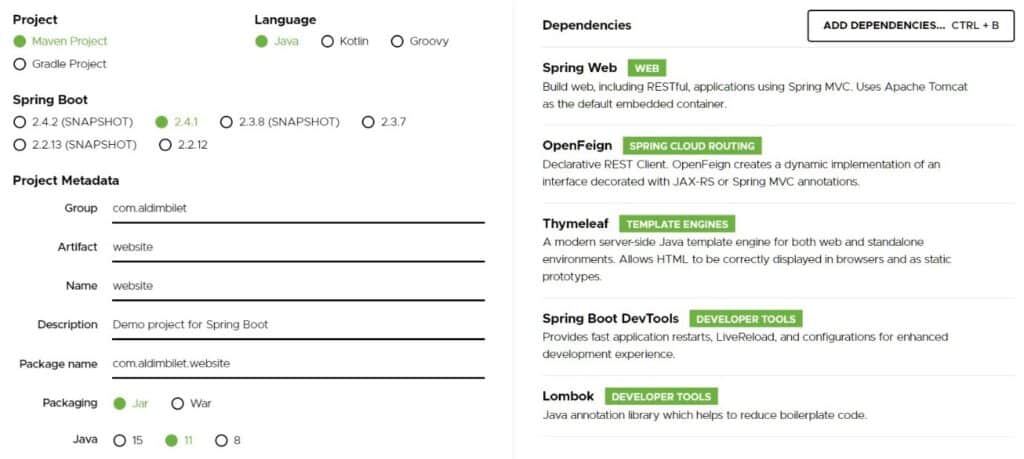Unveiling the Power of Feign Client: Simplifying Microservices Communication
In the realm of microservices architecture, communication between services is paramount. As systems grow in complexity and scale, maintaining efficient communication becomes increasingly challenging. Enter Feign Client, a powerful tool that streamlines inter-service communication, reducing complexity and enhancing maintainability. In this article, we delve into the intricacies of Feign Client, exploring its features, benefits, and best practices.
Understanding Feign Client:
Feign Client, a part of the Spring Cloud ecosystem, is a declarative HTTP client that simplifies the process of making HTTP requests to other microservices. It allows developers to define interfaces and annotate them with the desired HTTP methods and endpoints, abstracting away the boilerplate code typically associated with REST API communication. Under the hood, Feign dynamically generates HTTP clients based on these interfaces, enabling seamless communication between microservices.

Features and Benefits:
1. Declarative API: With Feign, developers define HTTP clients using simple Java interfaces and annotations, abstracting away low-level HTTP request handling. This declarative approach enhances code readability and maintainability, allowing developers to focus on business logic rather than infrastructure concerns.
2. Integration with Service Discovery: Feign seamlessly integrates with service discovery mechanisms such as Netflix Eureka or Consul. By leveraging service discovery, Feign clients can dynamically resolve service endpoints, eliminating the need for hardcoded URLs and facilitating service scalability and resilience.
3. Load Balancing: Feign integrates with Ribbon, a client-side load balancing library. This integration enables Feign clients to distribute requests across multiple instances of a service, improving system reliability and performance.
4. Interceptors and Customization: Feign provides hooks for interceptors, allowing developers to customize request and response handling. This flexibility enables features like request logging, authentication, and error handling to be seamlessly integrated into Feign clients.
5. Error Handling and Retries: Feign simplifies error handling by providing default error mappings and customizable error decoding mechanisms. Additionally, it supports automatic retries with configurable retry policies, enhancing system resilience in the face of transient failures.

Step To Enable Feign Client
- Adding Maven Dependencies: Once your Spring Boot project is generated, open your pom.xml file to add dependencies.

- Enabling Feign Clients: Once the dependencies are in place, it’s time to enable Feign clients in your Spring Boot application. This is done using the @EnableFeignClients annotation. Add this annotation to your main Spring Boot application class as follows:

- Creating a Feign Client Interface: This interface should be annotated with @FeignClient and contain method signatures for the operations you wish to perform. The @FeignClient annotation requires at least one parameter: the name of the service you’re connecting to.

Best Practices:
1. Define Clear and Concise APIs: Design Feign interfaces with clear and concise methods that reflect the intended functionality. Avoid exposing implementation details or coupling with external service APIs to maintain flexibility and encapsulation.
2. Use Service Contracts: Establish formal service contracts through Feign interfaces to promote interoperability and versioning. Document API contracts comprehensively to ensure consistency and facilitate client development.
3. Handle Errors Gracefully: Implement robust error handling mechanisms within Feign clients to gracefully handle unexpected failures. Utilize Feign’s error decoding and retry capabilities to enhance system resilience and fault tolerance.
4. Monitor and Tune Performance: Monitor Feign client performance metrics to identify bottlenecks and optimize resource utilization. Fine-tune configurations such as connection timeouts, retry intervals, and load balancing strategies to align with service requirements and performance objectives.
5. Version Management: Employ versioning strategies for Feign interfaces to effectively manage API evolution and compatibility. Use techniques like semantic versioning and backward compatibility checks to ensure smooth upgrades and minimize disruptions.
Conclusion:
Feign Client simplifies microservices communication by providing a declarative and intuitive approach to building HTTP clients. With its integration capabilities, error handling mechanisms, and customization options, Feign empowers developers to efficiently interact with remote services while abstracting away the complexities of network communication. By adhering to best practices and leveraging Feign’s features judiciously, organizations can enhance the scalability, reliability, and maintainability of their microservices architectures, paving the way for streamlined and resilient distributed systems.